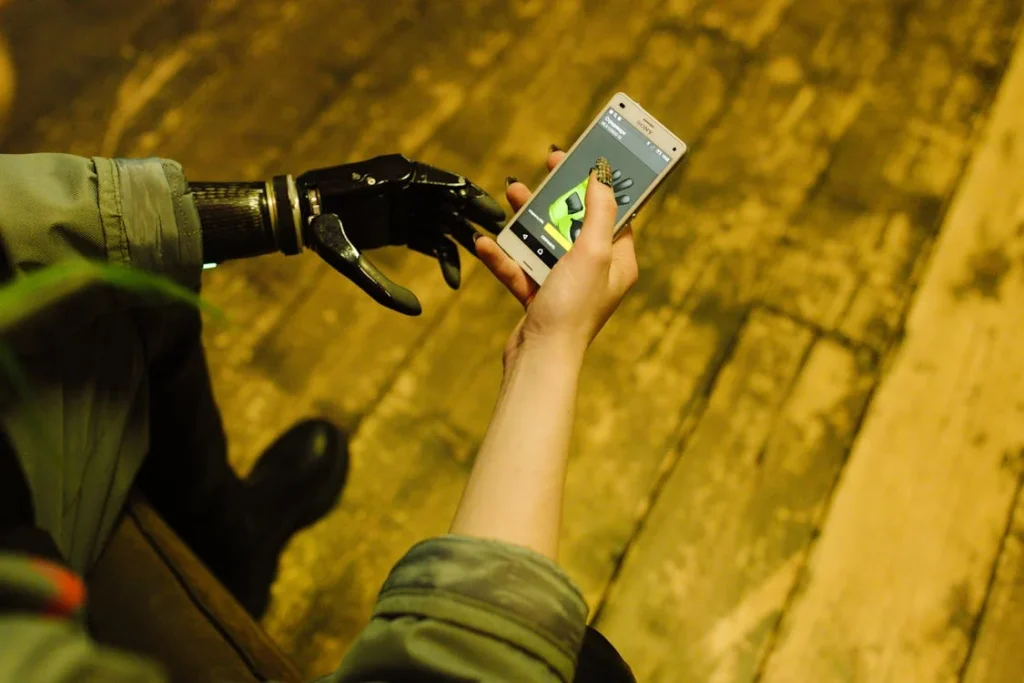Every child deserves the chance to move, grow, and play without limits. For children who use prosthetics, having the right device — and getting it on time — can make all the difference. But in many places, access to pediatric prosthetics is still full of roadblocks. Long wait times, high costs, limited clinics, and lack of awareness are just some of the challenges families face. That’s where parents and caregivers come in.
You don’t have to be a doctor or a policymaker to make change happen. In fact, no one is better placed to speak up for a child’s needs than the people who know them best. Advocating for better prosthetic access isn’t about fighting — it’s about showing up, asking the right questions, and keeping the conversation going. And when families work together, change becomes possible not just for one child, but for many.
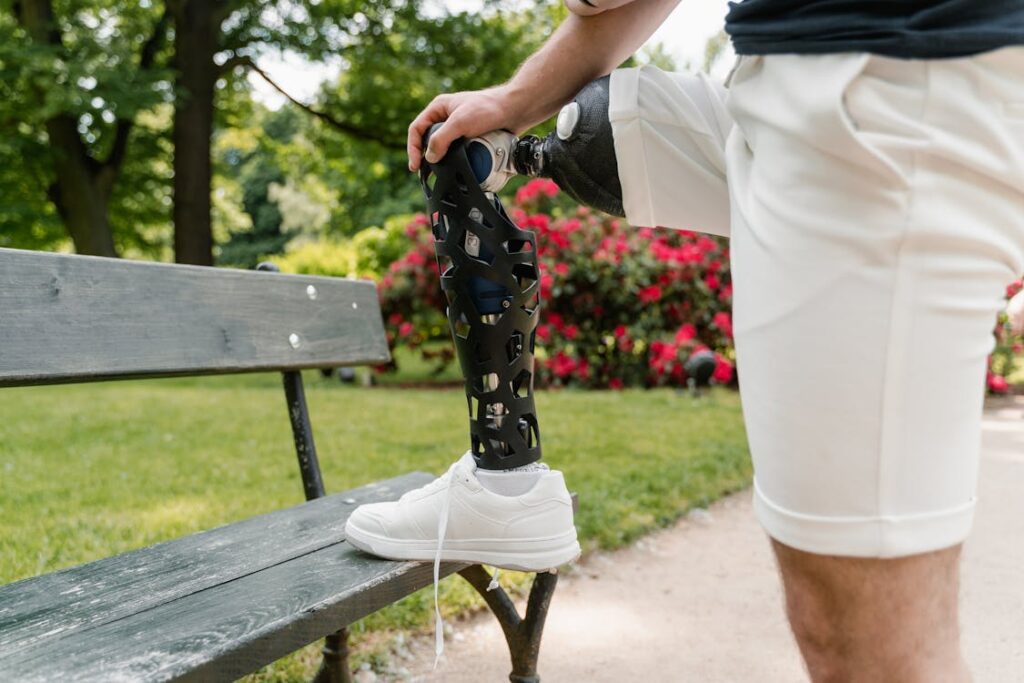
Starting with Awareness: Know What Your Child Deserves
Before any parent or caregiver can advocate effectively, it’s important to understand what their child is entitled to.
Many families don’t realize that access to pediatric prosthetics isn’t just about finding a device — it’s about making sure the right care, support, and follow-up are in place. And that begins with awareness.
Understanding What “Access” Really Means
Access is not only about availability. It also includes affordability, location, quality of care, and how easy it is to get support when something changes. A prosthetic that exists but takes a year to receive isn’t real access.
A clinic that provides a device but no training or fitting isn’t full care. For children, especially, the process needs to be smooth, supportive, and ongoing.
Their bodies change fast. Their needs shift quickly. So, access has to be more than a one-time appointment — it has to be a pathway.
When you know this, it becomes easier to see where the gaps are. Maybe your city has no pediatric specialists. Maybe insurance doesn’t cover enough.
Maybe there’s only one clinic, and it’s too far or too expensive. These are the kinds of barriers that can — and should — be challenged.
Learning the Basics of Pediatric Prosthetic Care
Many caregivers feel lost in the beginning. Medical words can be confusing. Every clinic has its own process. And when people are in a rush or overwhelmed, they may not explain things clearly.
But the more you know, the better you can ask for what your child really needs.
Start by understanding the basic stages of prosthetic care. There’s the first evaluation, where a child’s needs are assessed. Then comes fitting, training, and follow-ups.
For younger kids, this often includes rehabilitation support — sometimes even gamified therapy to help them adapt through play. And none of this is optional. It’s all part of giving the child a prosthetic they can actually use in daily life.
You don’t have to become an expert. But learning enough to ask, “What happens next?” or “How often should we come back?” gives you power in the process.
Care teams are more responsive when they know you’re engaged — and they’re more likely to treat your child’s case with the urgency it deserves.
Asking the Right Questions at the Right Time
One of the simplest but strongest tools you have is a question. And not just any question — the kind that gets people thinking.
For example, if someone says your child isn’t eligible for a new prosthetic yet, you might ask, “Can you help me understand what guidelines that’s based on?” or “Is there someone else we can speak to about alternatives?” These aren’t confrontational. They’re clear. They open doors instead of closing them.
The goal isn’t to be pushy — it’s to be persistent in a calm, informed way. Many times, delays or mistakes happen because people assume families won’t follow up or push back.
But when a parent stays present, asks thoughtful questions, and keeps showing up, it becomes harder for systems to ignore the need.
Good advocacy is steady. It’s consistent. It’s about asking — again and again, if needed — until the right person listens.
Making Space for Your Child’s Voice
Even at a young age, children can have strong opinions about their prosthetics. Some may love wearing them. Others may resist. And their reasons matter. Sometimes, kids don’t like how something looks.
Or it feels uncomfortable. Or it makes them stand out at school. These feelings are real and important. When children are left out of the conversation, it sends the message that their opinions don’t count.
A powerful part of advocating is making sure your child’s voice is heard — not just by you, but by the people providing care. You can start by including your child in appointments.
Ask them simple questions in front of the care team. “How did it feel to wear your hand today?” or “Do you want to show them how you use it to play?” This helps professionals see the child as a full person, not just a case.
The more involved a child feels, the more likely they are to use their prosthetic well. It also teaches them that their voice matters — a skill that will help them speak up for themselves as they grow.
Building a Relationship with Your Care Team
Advocacy doesn’t always mean pushing against the system. Sometimes, it means working closely with it — forming relationships that create smoother paths for the future.
When you build trust with a prosthetist, therapist, or clinic coordinator, they’re more likely to keep you in mind for new programs, faster scheduling, or funding opportunities.
They may also become your allies in larger advocacy efforts — like writing a letter for school support or helping you appeal an insurance denial.
It helps to keep communication warm but clear. Let the team know what’s working and what isn’t.
Thank them when they go the extra mile. But also be honest when something feels off. You’re not just a patient’s parent — you’re a partner in care.
Being seen as a thoughtful, involved caregiver can open doors that being frustrated or angry can’t. And in the long run, relationships often move mountains.
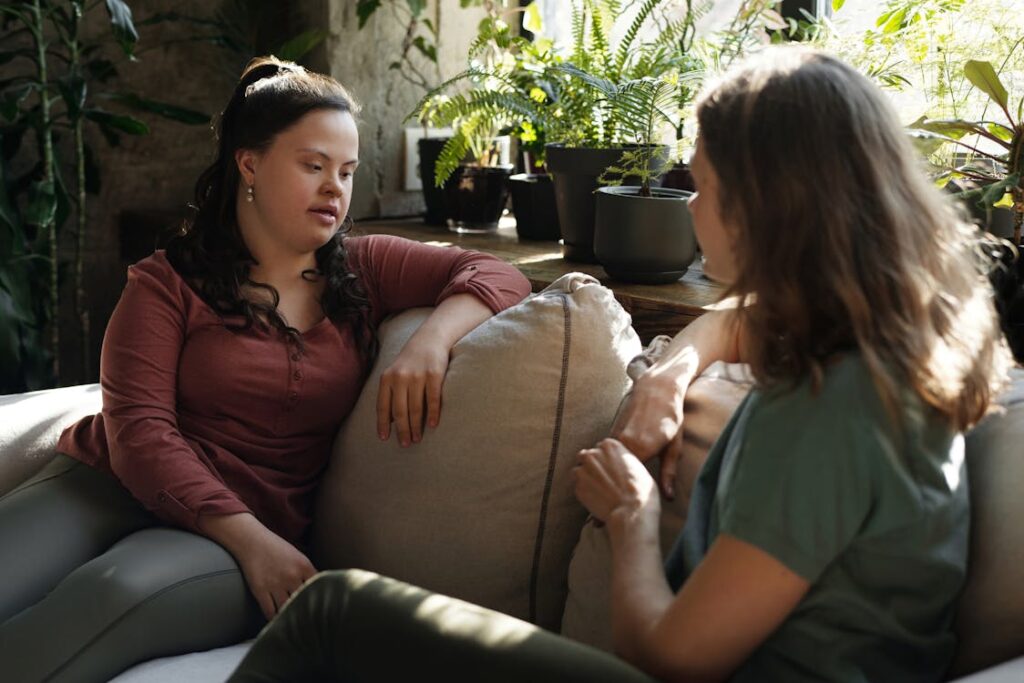
Expanding Advocacy Beyond the Clinic
Once your child has a prosthetic and you’ve built a relationship with their care team, your role as an advocate doesn’t stop there. In fact, some of the most important work begins outside the clinic — in the places your child lives, learns, and grows.
From schools to government offices to online communities, every space offers a chance to create better awareness and access.
Making Schools Part of the Solution
For many children, school is where they spend most of their day. It’s where they build friendships, try new things, and figure out who they are.
That’s why it’s so important that schools become active partners in your child’s prosthetic journey — not silent bystanders.
Sometimes, teachers and staff don’t know how to help. They may not have had experience with a child who uses a prosthetic. Some might worry about safety, while others may be unsure of what to say or do.
That’s where you come in. You don’t have to lecture or demand anything. Just start with a conversation.
Talk to your child’s teacher. Let them know what the prosthetic does, how it helps, and what your child might need support with — whether it’s carrying a tray, joining in sports, or just managing questions from classmates.
Offer to answer any concerns. You can even ask the prosthetist to provide a short guide or write a letter for the school if needed.
If your child is open to it, you might also ask the school if they’d be willing to do a small classroom session on prosthetics — a simple explanation of how they work and why some kids use them.
These talks can help other students be more accepting, curious, and kind. They also help your child feel less “different” and more proud.
Schools can become incredible allies — but it usually starts with one parent who helps them understand.
Working Through the Health System: It’s Complicated, But Not Impossible
In many countries, especially in India, the healthcare system isn’t always easy to navigate. There are government hospitals, private clinics, insurance plans, and non-profit programs — each with different rules.
Some cover prosthetics partially, some not at all. Some services are fast, others painfully slow. It’s confusing, frustrating, and often deeply unfair.
But this is where persistence pays off.
Start by asking: what’s available in your area? Are there government programs for children with disabilities? Are there hospitals that offer pediatric prosthetics under a subsidized plan? Does your state have any special welfare programs for children with limb loss?
Sometimes the answer is no. But sometimes the answer is yes — and the information just isn’t widely shared.
You might need to visit government offices, fill out forms, or follow up with social workers. It takes time.
But once you find the right channel, it can open up resources that make a real difference, not just for your child but for others in your community.
In some cases, prosthetic manufacturers or clinics — like ours — are already working with government agencies or CSR partners to offer lower-cost or even free devices to children in need.
Don’t be afraid to ask what’s possible. Sometimes, the support is already there — it just hasn’t reached your doorstep yet.
Using Community and Media to Share the Message
One of the most powerful ways to advocate is to share your story. You don’t have to be a public speaker or writer to make a difference.
Even small actions — like speaking in a local parenting group, posting on social media, or sharing your child’s journey with a community leader — can raise awareness and create ripple effects.
When people hear real stories, they care more. They understand the gaps in the system. They realize what needs to change.
Your voice, as a parent or caregiver, carries weight because it’s personal. It’s honest. And it helps move the conversation from theory to reality.
If you’re comfortable, consider reaching out to local newspapers or websites that focus on parenting, disability, or healthcare.
Ask if they’d be open to running a story. Or, work with disability rights groups in your city — many are happy to collaborate with families who want to create change.
Even a five-minute talk at a school event, a community gathering, or a health fair can open new doors and educate people who may one day become allies.
Every time you speak up, you make it easier for the next parent to do the same.
Finding Strength in Numbers
Advocacy can feel lonely — especially when you’re doing it for the first time. But it doesn’t have to be. All across the world, there are parents, caregivers, and support groups doing the same work.
You may not have met them yet, but they’re out there — sharing ideas, celebrating wins, and helping each other through hard days.
Try connecting with support networks online or locally. Look for groups focused on limb differences, pediatric prosthetics, or disability rights.
Many of these groups organize events, push for policy change, or provide tips on navigating the system. Being part of a network not only gives you emotional strength — it gives your voice more power.
When caregivers speak together, people listen.

Why Timing Matters: The Power of Early Intervention
Getting a prosthetic at the right time can change everything for a child. When introduced too late, a child might already have built habits that are harder to change. Their confidence may already have been shaped by limits.
But when prosthetic care begins early — and the child is supported throughout their developmental stages — the experience becomes more natural, more empowering, and far more effective.
Parents and caregivers are often the first to notice when something isn’t quite right. They might see a child struggling to crawl, avoid certain tasks, or get frustrated trying to keep up with others.
These moments are not just signs of need — they are opportunities for action.
Recognizing the Right Time to Start
One of the most common misconceptions is that children need to wait until a certain age before they can start using a prosthetic. While it’s true that every child is different, research and experience show that earlier is often better.
A baby born without a limb can begin prosthetic use as early as six to eight months — not for full function, but for sensory input, balance, and early movement training.
Early use helps the child integrate the prosthetic into their natural development. They learn to move with it as they learn to move their own body. It becomes part of their sense of self.
Children who start early often have fewer struggles with rejection or discomfort later on.
But even for children who acquire a limb difference later in life, acting quickly can help preserve confidence and function. After an accident or illness, the body and brain both need time to adjust — but too much delay can make recovery harder.
The sooner the child is introduced to options and support, the smoother the road ahead becomes.
The Role of Pediatricians and Early Screening
Not all prosthetic journeys begin with a prosthetist. Many start in the pediatrician’s office, or even earlier — during prenatal scans or at birth.
A pediatrician who knows what to look for can refer a family early, guide them toward support services, and begin conversations before delays become frustrations.
But sometimes, pediatricians are hesitant to suggest prosthetics, especially when the child seems to be coping in other ways. In those cases, parents and caregivers must trust their instincts.
If something feels delayed or if tasks seem unusually hard for the child, it’s okay to ask directly: “Is it time to speak to a specialist?” or “Could we explore whether a prosthetic would help?”
Asking early doesn’t mean rushing the process. It means opening the door before it’s too late.
Watching for Missed Milestones
Another way caregivers can advocate is by keeping an eye on developmental milestones.
Children with limb differences may crawl differently, walk later, or avoid certain tasks like stacking blocks or holding utensils. These delays aren’t always serious, but they can be signs that additional support is needed.
If a child avoids using their limb at all — what clinicians call “non-use” — it may become harder to re-engage that side of the body later. This is especially true with upper-limb differences.
When a child learns to do everything one-handed, they often stop trying to use the other side altogether. A prosthetic, introduced early and with the right support, can keep both sides of the body engaged and prevent long-term imbalances.
Caregivers who notice these patterns can bring them up during check-ups or therapy sessions.
They can say, “I’ve noticed they never use their left arm — could we look into what’s going on?” or “Is it normal for them to walk this way at this age?” These are gentle but powerful questions that can lead to life-changing action.
Empowering Families with Early Information
Early intervention isn’t just about devices — it’s about information. Families that receive honest, hopeful guidance early on tend to feel less anxious and more prepared.
They know what to expect, what questions to ask, and what their child might need next.
Unfortunately, many families are left in the dark after a diagnosis or limb loss. They might be told to “wait and see” without any clear plan.
They might not even know that pediatric prosthetics are an option.
Caregivers who educate themselves — and share that knowledge with others — can break this cycle.
They can help other families ask better questions, seek earlier referrals, and feel less alone in the process. A simple act, like sharing a trusted clinic’s contact or pointing someone toward a support group, can lead to real progress for another child.
When early intervention becomes the norm — not the exception — more children grow up with strength, confidence, and the tools they need to thrive.
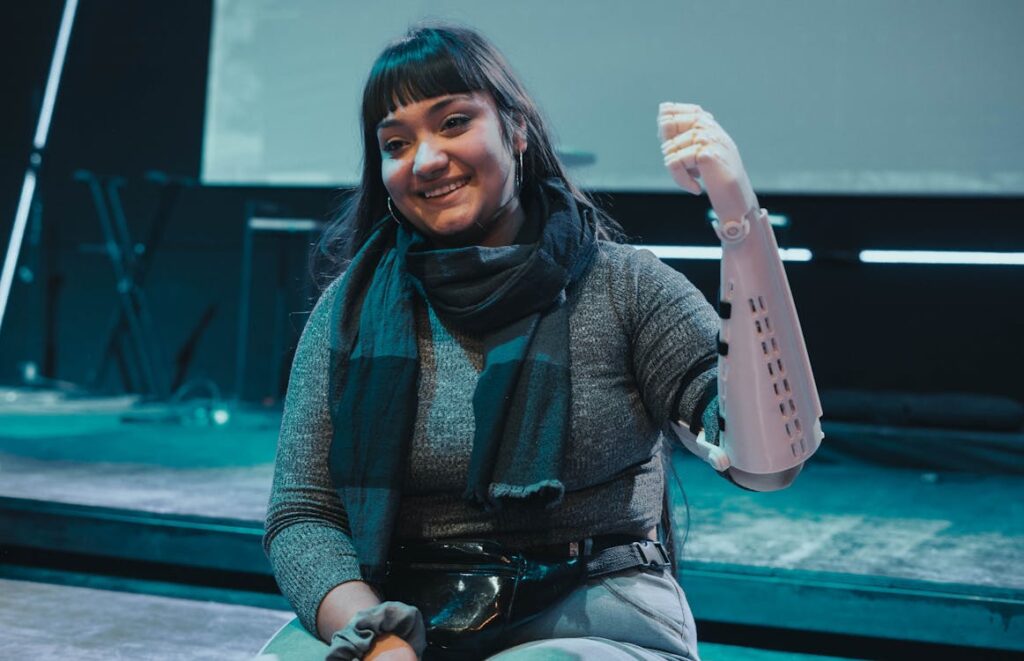
Breaking the Silence: Tackling Social Stigma and Public Perception
Prosthetics are tools, but for many children, they can also become the most visible part of who they are. Whether it’s a brightly colored bionic arm or a leg that clicks when walking, a prosthetic often invites attention.
Sometimes it’s curiosity. Sometimes it’s confusion. Other times, it’s quiet avoidance or even open insensitivity.
For a child, how the world reacts to their prosthetic shapes how they see themselves.
For caregivers, this means preparing not just for fittings and follow-ups — but for social moments in parks, schools, buses, and birthday parties.
Preparing for Questions Without Fear
Children, especially young ones, don’t filter. They ask what’s on their mind. “What happened to your arm?” “Why do you have that robot leg?” While some questions are innocent, they can still catch a child off guard or make them feel different.
If the child isn’t ready, those moments can plant seeds of discomfort or shame.
The best way to handle this is by helping your child feel in control of their story. Talk with them at home about the kinds of questions people might ask and how they might want to respond.
Give them a few simple, age-appropriate phrases they can use. Something like, “It helps me do stuff like you do,” or “It’s my special arm — I was born this way.”
These short answers give children a sense of agency. They don’t have to explain everything — just enough to feel comfortable and confident.
Caregivers can also model this by stepping in respectfully when needed.
If someone asks a rude question or stares too long, a gentle redirection — “She’s just learning to use her new hand, thanks for understanding” — helps protect the child while setting boundaries.
Reframing the Prosthetic as Something Positive
In many cultures, disability is still surrounded by pity, secrecy, or discomfort. Even well-meaning people might say things like “Oh poor thing,” or speak to the caregiver instead of the child.
These reactions may seem small, but over time, they can make a child feel invisible or fragile.
One way to shift this dynamic is by openly celebrating the prosthetic as a part of your child’s growth. Talk about it the same way you would talk about a new school bag or a favorite toy — something special, something theirs.
This doesn’t mean pretending everything is easy. It means showing the child — and the world — that their prosthetic isn’t something to hide or apologize for.
Children take their cues from adults. When caregivers speak with pride, others learn to follow that energy.
Educating the Community Gently, But Clearly
Most people are not intentionally unkind — they’re just uninformed. That’s where small acts of education can go a long way.
Whether it’s a short talk at school, a story shared in a parent group, or even a casual chat with neighbors, each moment becomes a teaching opportunity.
Explain that prosthetics aren’t about weakness — they’re about adaptation. Share that your child is capable, not in need of constant help. And don’t be afraid to call out harmful language when you hear it.
Words like “handicapped” or “crippled” still exist in daily conversation, and while they may not be meant to harm, they reinforce outdated ideas.
You don’t have to lecture. Just speak clearly. “We prefer ‘limb difference,’” or “Actually, she doesn’t need help — she just does it a different way.”
These corrections don’t just protect your child — they build a better environment for every child who may face similar bias in the future.
Supporting Your Child’s Self-Image at Home
No matter how strong your advocacy is outside, the most powerful place for shaping identity is at home.
Children form their core beliefs about themselves based on what they hear, see, and feel in their own family.
Support them by celebrating what they can do. Take pictures of their progress. Let them decorate their prosthetic or give it a nickname.
Ask them what they like about it — and listen closely. These simple actions help build pride. They also create emotional resilience, which is what children will lean on when others don’t understand or say the wrong thing.
And when hard days come — because they will — be the safe place they can return to.
Let them express sadness, anger, or frustration without rushing to “fix” it. Sometimes, just being heard is enough.
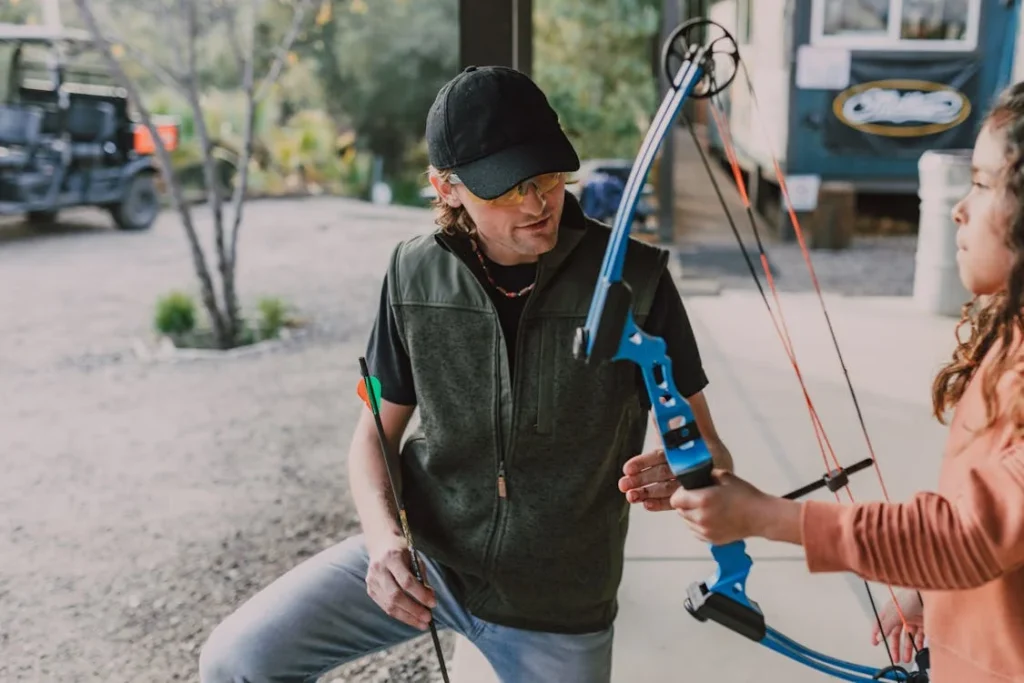
Keeping Up with Innovation: Why Tech Literacy Matters for Caregivers
Pediatric prosthetics are evolving fast. What once seemed impossible — bionic hands with grip sensors, app-controlled limbs, lightweight 3D-printed sockets — is now part of everyday care.
But as prosthetics get smarter, so does the need for families to understand the tools they’re using. That’s where tech literacy comes in.
Parents and caregivers don’t need to be engineers or tech experts. But they do need to feel confident navigating devices, apps, settings, and updates — because these things affect how well the prosthetic works for their child in real life.
Understanding Today’s Tech-Enabled Prosthetics
Many modern prosthetics now include digital components. Some use sensors to pick up muscle signals.
Others connect to smartphones for calibration or battery monitoring. Some allow children to switch grip patterns with a tap or even use gaming-style rehab tools at home.
To get the most out of these features, caregivers need to know how they work. Not every function will be used every day, but knowing what’s available gives you more options — and helps you spot problems early.
For example, if a prosthetic hand isn’t gripping as well as before, the issue might be with the settings — not the fit.
Or if a leg prosthetic has a Bluetooth calibration tool, a simple adjustment on your phone could improve the child’s gait or comfort. These are real, everyday benefits that come from basic familiarity with the tech.
Learning the basics of how the device functions, charges, updates, or responds to different inputs gives you an edge — and helps you avoid relying fully on clinic visits for minor issues.
Being Involved in the Tech Conversation
It’s easy to feel left out when a clinician or prosthetist talks about “EMG signals,” “adaptive firmware,” or “socket alignment parameters.”
The language can sound overwhelming. But the more families speak up and ask for clear explanations, the more inclusive the industry becomes.
Caregivers who say, “Can you explain that in simpler terms?” or “Can you show me how to reset this at home?” are helping more than just themselves.
They’re making space for future families to receive care that’s less intimidating and more empowering.
It’s okay to not understand everything on the first try. What matters is being willing to learn — and expecting professionals to meet you halfway with clear, respectful communication.
Teaching Children to Manage Their Own Tech
As kids grow, they naturally want more control over their lives. This includes their prosthetic.
A child who learns how to adjust grip modes, recharge their battery, or track wear-time is learning more than just technical skills — they’re learning independence.
Caregivers can support this by involving children in the tech side of their device. Show them how the app works.
Let them explore the settings with guidance. Explain what each button does, or walk them through a troubleshooting step.
This kind of hands-on involvement not only builds confidence — it turns the prosthetic into a personalized tool rather than a clinic-owned device.
And if your child loves technology? Even better. Some kids take genuine pride in understanding the ins and outs of their bionic arm or leg.
That pride can drive better usage, more consistent wear, and even open doors to future interest in engineering, healthcare, or robotics.
Staying Informed Without Getting Overwhelmed
With new models, apps, and features coming out every year, keeping up can feel like a full-time job. But it doesn’t have to be.
The goal isn’t to learn everything — just to stay aware. Sign up for newsletters from trusted prosthetic providers.
Follow a few disability tech pages online. Join parenting forums where updates are shared. Or simply ask your prosthetist during check-ups, “Has anything new come out that could help us?”
Even attending one community webinar or reading one blog a month can keep you connected to what’s changing.
The key is to build a rhythm that fits into your life — not one that overwhelms it.
Being tech-aware gives you more control, more choices, and a deeper sense of partnership in your child’s care journey.
It also prepares you to advocate for smarter solutions, faster fixes, and more tailored support.
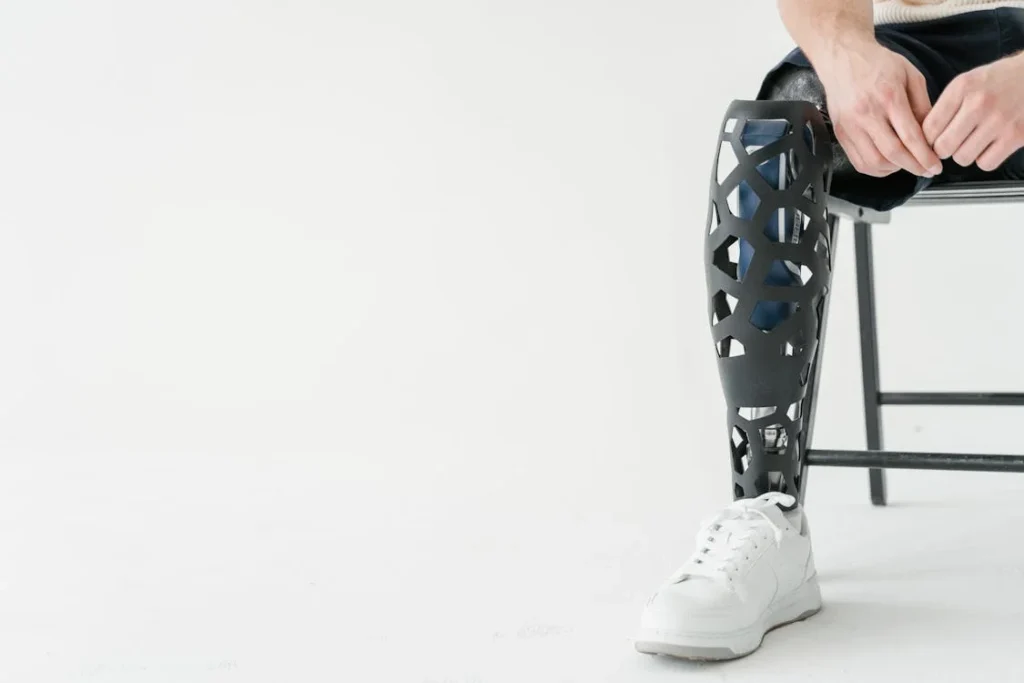
Growing Up with a Prosthetic: Preparing for the Teen Years
As children grow, their relationship with their prosthetic changes. What worked at age five may not feel right at fifteen. A prosthetic that once felt exciting might now feel awkward or outdated.
The emotional, physical, and social needs of teens are very different from those of young children. And for caregivers, that means shifting the way support is offered — from doing things for your child to doing things with them.
The teenage years are about identity, independence, and fitting in. Prosthetic care during this time has to reflect that — not just by adjusting the device, but by acknowledging the growing complexity of how teens see themselves and the world.
When Looks Start to Matter More
Younger children tend to focus on what a prosthetic can do. Teens care just as much about how it looks. They may want a sleeker design, colors that match their style, or even a cosmetic cover that draws less attention.
Some may want their prosthetic to stand out, while others want it to blend in. Neither is wrong — it’s about giving them choice.
Caregivers can support this shift by encouraging teens to express their preferences. Ask what they like. Let them be part of the design and selection process.
A prosthetic that reflects their identity — not just their function — is more likely to be worn with confidence.
Even something as small as a new color scheme, printed design, or textured grip can transform how a teen feels about using their device in public.
This isn’t about vanity. It’s about control, ownership, and dignity.
Managing New Activities and Higher Demands
As kids become teens, their activities become more demanding. Sports get more intense.
School gets more hands-on. Social life gets more complex. Prosthetics need to keep up — not just in terms of size, but in performance.
Maybe your child wants to join a football team, play an instrument, or work a part-time job.
Their prosthetic needs may shift to match those goals. That might mean a more durable socket, a different suspension system, or a specialized tool for a hobby.
Caregivers can prepare for this by talking regularly with prosthetists about future needs.
Don’t wait until there’s a problem. Instead, ask: “What might they need next year?” or “Is there a version that supports sports or fine motor skills better?”
Anticipating growth allows families to plan — not panic.
Supporting Self-Advocacy and Confidence
One of the most important skills a teen can learn is how to speak up for themselves. This includes talking about their prosthetic.
Whether it’s explaining their needs to a teacher, requesting an accommodation at school, or handling questions from peers, teens who feel prepared are more likely to stand tall.
Caregivers can encourage this by slowly handing over small parts of the process. Let your teen lead conversations with clinicians.
Ask them to write their own questions for appointments. Let them decide when and how to talk about their prosthetic with friends.
It also helps to validate their feelings — even when those feelings are complicated. Some teens may feel tired of wearing a prosthetic.
Others may go through phases of rejecting it altogether. These ups and downs are normal. The goal is to keep the door open, not to force use.
Say things like, “It’s okay to have mixed feelings,” or “Let’s figure out what’s working and what’s not.” When teens feel emotionally safe, they’re more likely to re-engage.
Planning the Transition to Adult Care
As teens move toward adulthood, there’s another shift that needs attention: the transition from pediatric to adult prosthetic services.
Not all clinics handle this well. Some families are surprised to find that their child has “aged out” of a pediatric program without a clear next step.
Planning early helps. Around age 15 or 16, start talking to your prosthetist or care team about the transition.
Ask what adult services are available. Find out whether the current provider can continue care or will refer you elsewhere. If your child is still in school, check how long they can receive support under educational health plans.
Helping your teen take the lead here builds responsibility. Teach them how to book appointments, speak to insurance reps, and keep track of their prosthetic’s condition.
It’s not about letting go — it’s about setting them up to succeed on their own terms.
Conclusion
Advocating for a child’s access to prosthetics isn’t just about navigating systems — it’s about building a life where they can move, grow, and thrive with confidence. From early detection and school support to handling social stigma, tech know-how, and the teenage transition, caregivers play a vital role at every step.
You don’t need to have all the answers. You just need to stay curious, ask questions, and keep showing up. Whether it’s speaking to a doctor, adjusting to new technology, or helping your child find their voice — every action you take shapes a better path forward.
In a world where access is still uneven, your advocacy matters. Not just for your child, but for many others who will walk this path after you.



